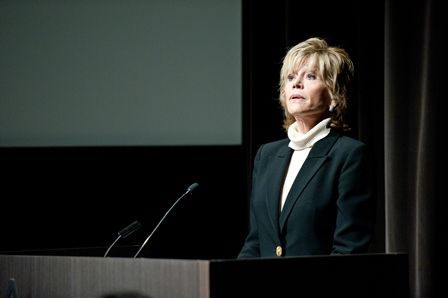
Podczas warsztatu odbywającego się na Uniwersytecie Środkowoeuropejskim Fundacja Shoah Uniwersytetu Południowej Kalifornii dopełnia pierwszy rok realizacji nowego projektu edukacyjnego w Europie
BUDAPESZT—17 listopada, 2012— w ubiegłym tygodniu nauczyciele z całej Polski przyjechali na Węgry, aby wziąć udział w warsztatach zorganizowanych przez Fundację Shoah – Instytut Historii Wizualnej i Edukacji na Uniwersytecie Południowej Kalifornii. Warsztaty, część programu Nauczanie z użyciem relacji w 21.